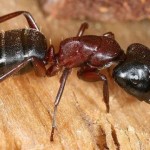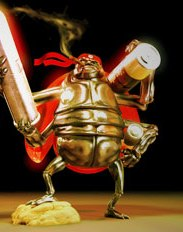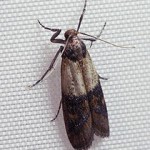READY TO GET STARTED?
REQUEST A FREE ESTIMATE
Fill out the form below or call (888) 466-7849 for a free, no-obligation estimate.
Valentine’s Day is a day of LOVE! Bugs aren’t something that we usually “love” but in the spirit of the holiday, here are 5 bugs to love!
 The southern part of the United States is home to more than 100 ant species. Georgia is among the states that has a particularly tough time with ants due to the many species that dwell in our region. Our diverse climate aids in the relocation of many invasive ant species because we have both tropical and temperate northern climates available.
The southern part of the United States is home to more than 100 ant species. Georgia is among the states that has a particularly tough time with ants due to the many species that dwell in our region. Our diverse climate aids in the relocation of many invasive ant species because we have both tropical and temperate northern climates available.
When you call your exterminator to get rid of ants, you want to know that they are really researching the issue and not just spraying. Northwest takes a IPM approach to managing pest programs. The first step is identifying the issue, in the case, ants.
Steps to identifying ants:
Are you having a problem with ants? If so, call Northwest Exterminating today or go online to fill out your FREE inspection form.
 This sounds like the kind of stuff that sci-fi movies are made out of. Researchers have been working to outfit insects with tiny electronic sensors in hopes of creating insects that can be used in applications ranging from search and rescue to espionage, reports John Roach for MSNBC.
This sounds like the kind of stuff that sci-fi movies are made out of. Researchers have been working to outfit insects with tiny electronic sensors in hopes of creating insects that can be used in applications ranging from search and rescue to espionage, reports John Roach for MSNBC.
The Weird and Wonderful World of Pests
If you have a question, Ask Our Mouse!! Or call us at 888.466.7849
Northwest Exterminating uses an Integrated Pest Management, or IPM, approach to our pest control program, NorPest Green. IPM is an effective and environmentally sensitive way of treating pests using a common sense approach. Using non-chemicals is the primary means of treating pests in an IPM program which coincides with Northwest’s goal of creating healthier living and working environments.
The common sense approach that IPM is based on consists of many different elements such as habitat modification that reduces or eliminates sources of food, water, shelter, entryways for pests, and maintaining healthy lawns. Preventative measures like thorough and frequent cleaning of food storage areas, caulking cracks, daily trash removal, properly spreading mulch, and proper landscaping techniques all play an important role in reducing pest problems.
Pest Prevention Tips:
● Caulk any cracks or gaps in the structure to block pests from coming into your structure
● Use door sweeps and screens on windows and doors
● Grade away from the structure to prevent water from pooling which can lead to mold
● Landscape using indigenous vegetation that is naturally pest resistant
● Avoid indoor plantings that foster mold growth and can serve as attractants for pests
● Keep vegetation away from the structure to reduce mold and pests’ access into the structure
For help in these, or other areas around your structure, please contact Northwest Exterminating.
Jerry Hatch
Technical Director
BCE CEHT CP-FS
LEED Green Associate
 Moths are like the ugly step-sister of the butterfly. With over 160,000 species of moths, you are probably most familiar with the Indian Meal Moth or the Clothes Moth. The clothes moth effects only clothing and is a completely different pest topic than what we will be discussing today. Today, we’re going to talk about the Indian Meal Moth which is one of the most common food pests found in homes.
Moths are like the ugly step-sister of the butterfly. With over 160,000 species of moths, you are probably most familiar with the Indian Meal Moth or the Clothes Moth. The clothes moth effects only clothing and is a completely different pest topic than what we will be discussing today. Today, we’re going to talk about the Indian Meal Moth which is one of the most common food pests found in homes.
Moths are attracted to light for reasons unknown. They are known to hover around lights right outside of your home and can easily slip in when a door or window is opened. Moths are often found dead on window sills or along baseboards under windows because they are attracted to the light coming through the window. Adult moths have a very short lifespan which can be a good and bad thing. Good, because they don’t stick around for long, bad because that’s a lot of clean up.
So why does your home have moths? Not only are they coming into your home because they’re attracted to the light but they are also entering because your home provides food and shelter, a place to lay and hide their eggs, and a safe place from predators. You may find moths in your cabinets or pantry where you store grains, cereal, or flour. If there are pet foods or arts in crafts made out of food, these can also attract moths. Be assured that it is fairly simple to prevent and get rid of Indian Meal Moths that may be in your home.
If you need assistance with treating Indian Meal Moths, or any pest, call Northwest Exterminating at 888.466.7849 or visit us online.
This year, while packing up your holiday decorations, take some time to do a little pest control. We all know that bugs like to hide in places like attics, basements and other storage areas, so take this opportunity to do some exterminating. Before taking your boxes to their storage area, take a good look around. Below are some tips on what to look for before you store away your holiday decorations:
If you see any of these signs while putting away decorations, be sure to contact your exterminator. By being proactive, you can save yourself the hassle of a future infestation. Remember, cleanliness is key to keeping bugs and other pests out of your home.
When do you put your decorations away?
The Earth is full of interesting, magnificent creatures. One of those interesting creatures is the camponotus cylindricus… an ant that can explode itself.
The camponotus cylindricus, or exploding ant as we like to call it, uses their talent as an act of self-defense. When the ant nest is threatened by an intruder, the ant will grab hold of the intruder’s face with its teeth. They will then bend their bodies so violently that their outside burst and a layer of chemicals explode…making an attempt to kill both the intruder and themselves.
The chemical is stored in sacks that run along the ant’s body. It acts as an irritant to external organs and dries into a glue-like substance that attaches the ant to the body of its attacker. Many times this causes the intruder go blind and stops it from making it’s way to the nest. Either way…the intruder loses the battle.
Now talk about chemical warfare.
When we put out the call on Facebook and Twitter for topics that people wanted to read about on our blog we got a request for scorpions. Scorpions are one of those pests that can send chills through your body at just the thought of them. There are currently 1,200 known species of scorpions in the world.
Typically, if you get stung by a scorpion you get a similar reaction as you would if you were to be stung by a bee. Pain, itching, tingling, swelling, skin turning blue/black at the site of the sting are all signs of a scorpion sting and usually subside within 24 hours. Many people hurt themselves more trying to get away from a scorpion than they would if they had gotten stung. However, some people may develop an allergic reaction to a scorpion sting that can be life-threatening.
When a person gets stung by one of the more dangerous scorpion species, venom is injected into the body that can cause respiratory paralysis and other complications, usually between 2-20 hours of the sting. Thankfully, there is anti-venom that can be administered within 2 hours of the sting.
*Note – If there is no swelling or discoloration around the site of the sting, get to a Doctor immediately.
Scorpions are nocturnal feeders that feed mostly on insects and spiders. During the day, they go into hiding which helps to conserve their water (if water is available, they can survive for months without food). Scorpions are fond of cool temperatures and water so attics, crawl spaces, and even sinks are ideal places to find them. But beware; once the sun comes up they will go into hiding in just about anything.
Ways to control scorpions:
Do you have a funny story about hurting yourself while trying to get away from a scorpion or another pest?